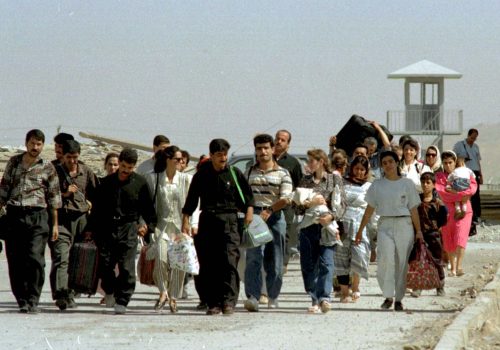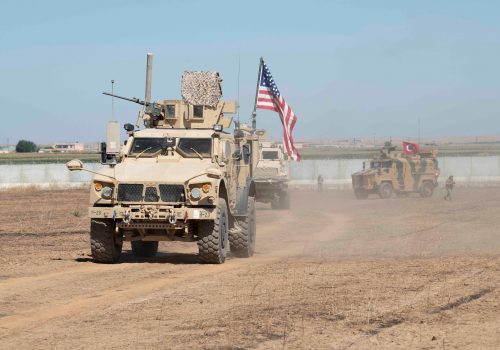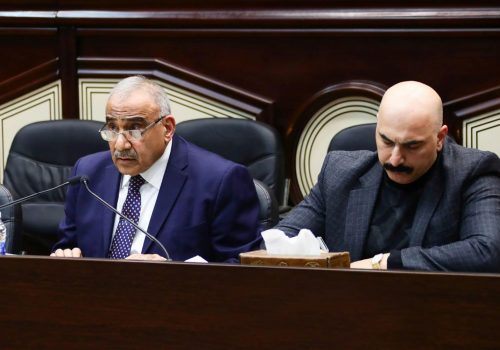To honor two generations of service members, prevent the next GWOT ribbon
The Global War on Terror (GWOT) ribbon is a small red, yellow, white, and blue badge. Service members fasten it to neatly pressed “dress uniforms,” where it can easily blend with a myriad of other ribbons.
Shortly after commissioning into the Air Force in 2015, I received my GWOT ribbon—the same ribbon my brother John received after commissioning into the US Army in 2007. One year later, John deployed to Camp Victory, Iraq. Ten years later, in 2018, I also deployed to Iraq, Kuwait, and Syria, followed by a second deployment to Afghanistan. At the time, the fact that my brother and I—separated nine years by age—were both deployed to Iraq—was simply a reality of military service. Today, however, it is staggering to see photos of us, a decade apart, fighting the same war on terror that well over two million service members have.
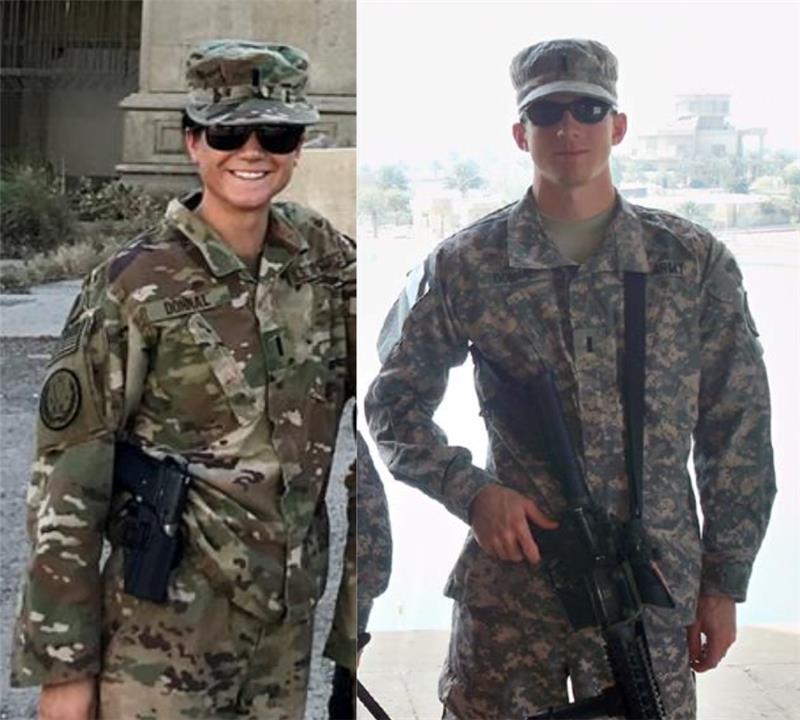
Our story is not unique. We are one of the hundreds—likely thousands—of families whose parents, children, spouses, and siblings have all trekked in and out of the Middle East over the past two decades.
The GWOT ribbon alone symbolizes this generation of soldiers, sailors, airmen, and marines who deployed to the Middle East. It is symbolic of a time when the very idea of “supporting our troops”—or even patriotism itself—evoked the image of a service member on patrol in a remote province in Afghanistan or Iraq. Yet, it also embodies a time when over seven thousand Americans lost their lives fighting wars whose objectives were unclear or against ideologies that an Army-issued M4 rifle could never defeat. This ribbon spans four American presidencies and reflects a war that shaped the training, careers, mentalities, and psyches of America’s armed services.
Today, executive and legislative actions signal a shift: America’s military footprint in the Middle East is shrinking and thousands of troops are coming home.
As we approach the twentieth anniversary of the September 11 terrorist attacks and America’s war on terror, it is a poignant time to ask, is America really coming home? If so, how can US policymakers honor the service of millions during GWOT and preserve the memory of 9/11 victims? And, perhaps most important, how can they ensure there is no GWOT ribbon 2.0, symbolizing another endless, multi-generational war?
Campaign trail promises versus Oval Office realities
Both Presidents Barack Obama and Donald Trump made impassioned promises to bring America’s troops home. On the campaign trail in 2007, President Obama proposed a phased withdrawal from Iraq, with forces home by March 2008, and promised to end the war in Afghanistan. In Iraq, troops did not leave until 2011, only to redeploy in 2014 to fight the Islamic State of Iraq and al-Sham. In Afghanistan, Obama surged troops from slightly more than thirty thousand when he entered office to over one hundred thousand in 2011. While Obama declared an “official end” to GWOT in 2013, this was largely symbolic—I received my GWOT ribbon in 2015, two years after Obama’s announcement. Similarly, Trump’s mercurial calls to end America’s involvement in “endless wars” proved just as susceptible to the realpolitik quicksand of US-Middle East dynamics. By the end of his presidency, Trump was Commander in Chief of about ten thousand ground forces in Afghanistan, Iraq, and Syria combined. It was a number only slightly lower than when Obama left office, and one that spiked to almost 26,000 in 2017 during operations in those very countries.
In March, President Joe Biden signaled a shift. In his Interim National Security Strategic guidance, he stated: “In the Middle East, we will right-size our military presence to the level required to…protect vital US interests.” In April, he announced the full withdrawal of US troops from Afghanistan. Then, in June, media outlets reported Pentagon plans to withdraw US weapons systems from countries including Iraq, Saudi Arabia, Kuwait, and Jordan, and to reduce the number of fighter jet squadrons assigned to the Middle East area of operations.
In late July, President Biden stated that the US combat mission in Iraq would conclude by the year’s end. In the legislature, the House of Representatives voted in June to repeal the 2002 Authorization for Use of Military Force (AUMF)—also known as the “Iraq War Bill.” The bill now moves to the Senate amid growing calls in Washington to also repeal the 2001 AUMF, a separate bill passed shortly after September 11, authorizing the president to use force against 9/11 perpetrators to prevent future terrorist attacks against the US.
For a military whose recent history is largely defined by Middle East conflict, these changes are palpable. Institutionally, they require changes to training, doctrine, and resource allocation. Culturally, they are a sea change for millions of service members whose uniforms were dubbed “Desert Cammies” for their association with Middle East deployments, and whose military memorabilia represent deployments, combat victories, and fallen friends in the region. The recent fall of Afghanistan to the Taliban and the reactions of grief, anger, and sorrow from US veterans, demonstrate just how intensely these changes are impacting those whose service records are defined by GWOT operations.
Remembering 9/11 by committing to better foreign policies
There are many ways to quantify the past two decades of American military action in the Middle East: dollars spent, lives lost, terrorists killed, territory cleared, or number of service members wearing the GWOT ribbon. Nevertheless, statistics alone don’t consider the lasting impact of war on everyday service members who grew up in the GWOT, lost a friend to it, or whose career is forever shaped by it. To honor them and those who died on 9/11, America should be humble about its shortcomings, let its failures and successes be didactic, and commit to crafting deliberate policies that give unprecedented thought to reducing the long-term likelihood of future protracted overseas engagements, thereby ensuring that there is no “GWOT ribbon 2.0.”
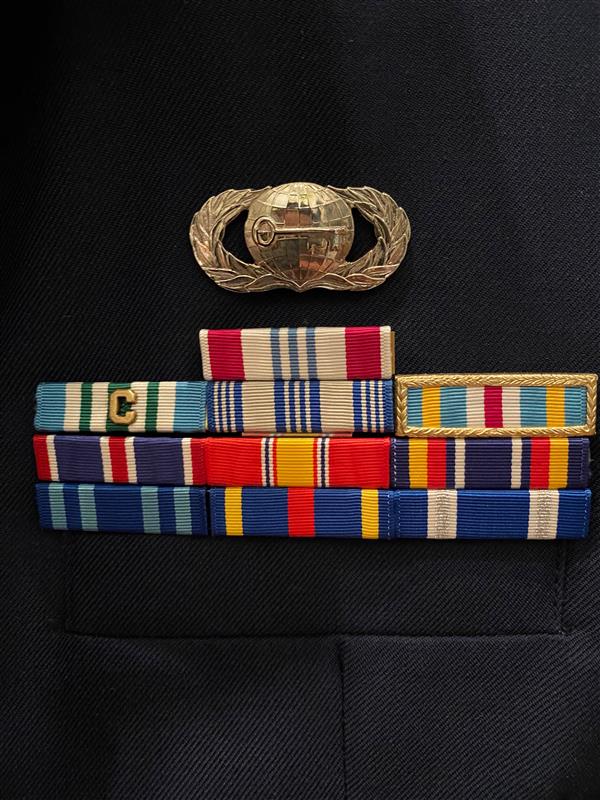
During strategic planning for overseas engagements, both military and civilian planners should be intentional in defining realistic, achievable political outcomes. Strategies change as operational realities develop and each shift in operations or policy should be guided by the initially agreed-upon end states. Military commanders and administration officials would find that the alignment between policy and implementation is most concrete when they are in lockstep about what these end states are—i.e. nation-building versus counterterrorism—and military leaders owe policymakers clear, transparent communication on the status of operations, even if it is negative.
In turn, administration officials must work to ensure alignment between stated priorities and resource allocation, specifically as the US shifts from counterterrorism to great power competition. During future military operations, relevant and adequate representation in decision-making from executive agencies—including the US Department of State, USAID, Defense Security Cooperation Agency, and members of the intelligence community—will be critical, especially as the Biden administration looks to reposition diplomacy at the center of America’s foreign policy. When the Pentagon employs partner forces, a lesson learned is to not overpromise security guarantees, as was the case with the Kurdish-led Syrian Democratic Forces. These promises create complicated post-conflict realities where military operations become intractable from political resolutions and military commanders can struggle to understand when their mission is complete.
This type of deliberate planning and policy will require humility. Policymakers will have to state upfront what America can and cannot commit to and be comfortable conducting more scoped, limited military operations while turning more responsibility back to the State Department before, during, and after military operations (assuming State is tooled and resourced in a parallel effort to manage this responsibility).
Although much of this is “grand strategy 101,” it bears repeating. On September 11, many US leaders, policymakers, and officials with the power to make change will appropriately wonder how to best honor the 2,977 people who died on 9/11 and those who served to protect the homeland since. Committing to better, more deliberate policies that prevent another twenty years of tying yellow ribbons on trees, filling a new section of Arlington cemetery, or awarding another, almost two-decade-long ribbon to US service members is the best, most lasting way to honor their service and memory.
Twenty years from now, if America’s leaders can reflect and affirm that our nation’s policies are more targeted, that there is no military ribbon representing an endless war, and that the policy failures resulting from 9/11 became lessons for the next generation of leaders, America will have respectfully honored the victims of September 11, and those who served in the wars that followed.
Caroline Donnal is a former Young Global Professional with the Atlantic Council. She is a Captain in the Air Force Reserve, currently assigned to the Joint Staff. As an active-duty officer at United States Central Command, Caroline worked as an analyst, served on the staffs of the USCENTCOM Commander and Director of Intelligence, and deployed to Kuwait, Iraq, Syria, and Afghanistan.
The views expressed in this article are those of the author and do not reflect the official policy or position of the Department of Defense or the US Government.
Image: People look at the Global War on Terror (GWOT) Memorial Flag near the site of the National September 11 Memorial & Museum in New York City, U.S., August 30, 2021. REUTERS/Brendan McDermid
